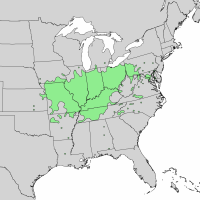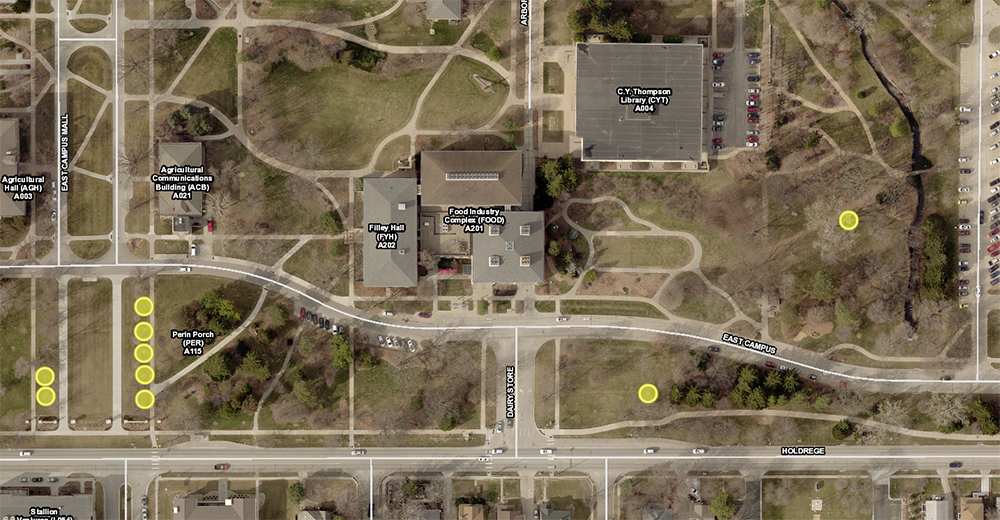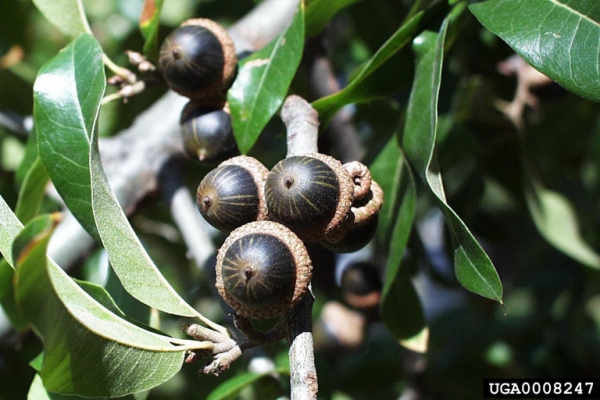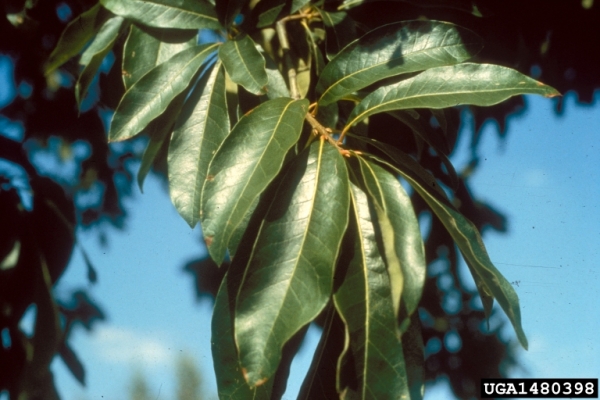
About Oaks (home) | Map | Plant List | Cultivar/Species Information | Sources | Other Campus Oaks of Interest
Latin Name: Quercus imbricaria
Common Name: Shingle Oak

Cultivar:
Family: Fagaceae
Division: Red
Native range: Pennsylvania to Georgia, Nebraska to Arkansas.
Introduced: 1724
Sun/Shade: Sun
Height × Width: 50'-60' × same or a bit more; in the wild to 80' - 100'.
Form: Pyramidal to upright-oval when young, broad-rounded with age.
Zones: 4 - 8
Flower: Monoecious. Pistillate catkins (male infloresences).
Leaves: ID feature: UNLOBED. Oblong, lanceolate, bristle-like tip, revulate (slightly rolled-back) margin, lustrous, dark green above, pale green and pubescent beneath. 1/4" - 5/8" petiole (leaf "stem"). Can be reddish when emerging. Old leaves are persistent.
Fall Color: Yellow-brown to russet-red.
Fruit: Nut. Acorns short-stalked, nearly globose, 5/8". Cap covers 1/3 to 1/2. Appressed red-brown scales, mature 2nd year.
Buds: Sharp and pointed, often slightly hairy.
Bark: Gray-brown. With age, low ridges and shallow furrows.
Wildlife: Songbirds, upland game birds, and mammals. For detailed information about insect and other faunal associations see Illinois Wildflower's Quercus imbricaria page.
Disease issues: none serious
Euro-American Cultural Uses: wood used for shingles, hence the common name.
Indigenous Cultural Uses: Infusion of bark had many medicinal uses, wood was used for tools, fiber for basketry.
Folklore:
Notes: Tolerant of drier soils.
Where to find Quercus imbricaria in Maxwell Arboretum:
(click to enlarge)
In print
←Previous Oak → NEXT OAK
All images from the Earl G. Maxwell Arboretum unless noted. 
Acorns
Paul Wray, Iowa State University, Bugwood.org
Foliage, ID characteristic: smooth leaf margin, no lobes.
Catkins (male inflorescences) and emerging foliage.
Catkins (male inflorescences) and emerging foliage.
Fall color.
Fall color.
New Quercus imbricaria, Holdrege Street frontage.
Foliage
Richard Webb, Bugwood.org